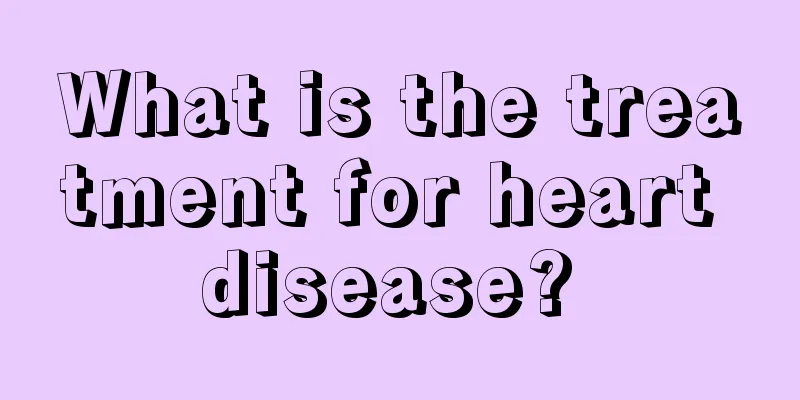Reasons for heart bypass surgery

|
Most people's understanding of heart bypass surgery in real life is limited to TV dramas, in which many heart patients undergo heart bypass surgery. But heart bypass surgery is not for all heart patients. Generally speaking, the decision on heart bypass surgery should also be based on each person's physical fitness. As the saying goes, only by finding out the cause of the disease can the right medicine be prescribed. Although there are many reasons for heart bypass surgery, the main one is related to coronary heart disease, so you should pay attention to understanding it. Heart bypass, commonly known as coronary artery bypass grafting, is internationally recognized as the most effective method for treating coronary heart disease. Coronary artery stenosis in coronary heart disease is often distributed in segments. They are mainly located in the proximal and middle segments of the coronary arteries, while the distal segments are mostly normal. Coronary artery bypass grafting is to establish a channel between the proximal and distal ends of the coronary artery stenosis, allowing blood to bypass the stenosis and reach the distal end, just like a bridge allows a road to cross mountains and rivers without obstruction. The heart pumps blood day and night, delivering nutrients to organs and tissues throughout the body. However, the heart's own muscle tissue, which acts as a pump, also requires oxygen and nutrients, which are provided by the coronary artery system. If coronary atherosclerosis causes stenosis or occlusion of the lumen, it will lead to ischemia of the myocardium supplied by this section of the coronary artery, and in severe cases, myocardial infarction may occur. When the coronary blood supply is relatively or absolutely insufficient, myocardial metabolism switches from aerobic metabolism to anaerobic metabolism, the energy (ATP) supplied to the myocardium decreases rapidly, and myocardial contraction gradually stops. This change occurs within a few minutes of acute coronary artery occlusion, but even in the most severe myocardial ischemia, myocardial cells are still alive within 15-18 minutes. At this time, if blood is reperfused, the ischemic damage will stop. One to four days after reperfusion, there is no necrosis in myocardial cells. If the ischemia time is prolonged, reperfusion cannot prevent the death of some myocardial cells. The longer the ischemia time, the more cells are irreversibly damaged. After 40-60 minutes of ischemia, most of the cells in the central zone of severe ischemia die. In moderate ischemia, cells in the middle layer and epicardium can survive longer. After 6 hours of coronary artery occlusion, most of the controlled cells have died. Heart bypass surgery is a procedure that uses a catheter to prevent blood from flowing through the narrowed part when one or more coronary arteries are narrowed or blocked due to arteriosclerosis, resulting in insufficient blood supply. The catheter used in the operation is the patient's own blood vessel, usually the great saphenous vein in the thigh or calf. Sometimes the internal mammary artery, the artery in the upper abdomen, the artery in the wrist, etc. are also used. |
<<: How to wash cherry tomatoes cleanly
>>: Location of the heart and lungs
Recommend
When is the best time to run?
Nowadays, many people pay more and more attention...
Is it possible to develop polyps if gastric inflammation is severe?
In daily life, many people will have gastrointest...
What tests should be done during the 7th month of pregnancy?
When a woman is seven months pregnant, she has en...
Excessive sweating is also a warning sign
Some people think that sweating frequently in the...
7 small behaviors for health and longevity are better than food therapy
Regardless of ancient or modern times, health pre...
Can bird flu symptoms be cured?
Human infection with avian influenza has become m...
What are the characteristics of An's therapy?
Regarding An's therapy, there must be many pe...
How to care for breast cancer patients? 9 common postoperative care methods for breast cancer patients
Breast cancer is a common disease in life, most o...
What are the methods of gastric cancer review?
For gastric cancer reexamination, you can go to t...
Can Sanfutie remove dampness?
The climate is very hot in the summer, and during...
Beef fat content
Beef is high in nutrients and tastes great. It is...
How to effectively treat gonococcal urethritis
The treatment of candidal urethritis must, of cou...
How long should I abstain from certain foods after full-face double eyelid surgery?
Double eyelids are a shape that people like very ...
The structure and function of facial skin
Many people do not know the structure and functio...
Is there any relationship between liver cancer and eating moldy food? Be careful of this kind of low-quality food causing liver cancer
Soy sauce is an indispensable condiment on the Ch...









